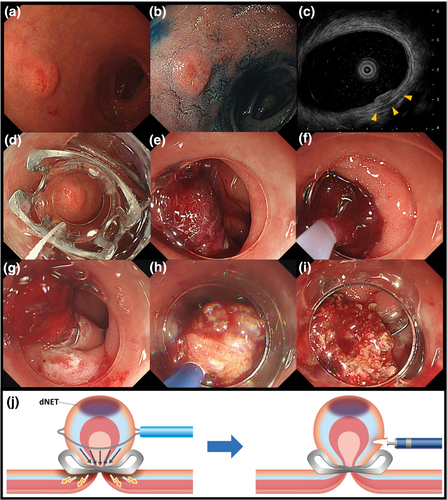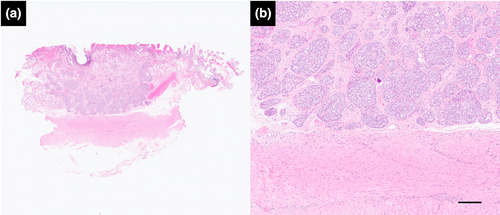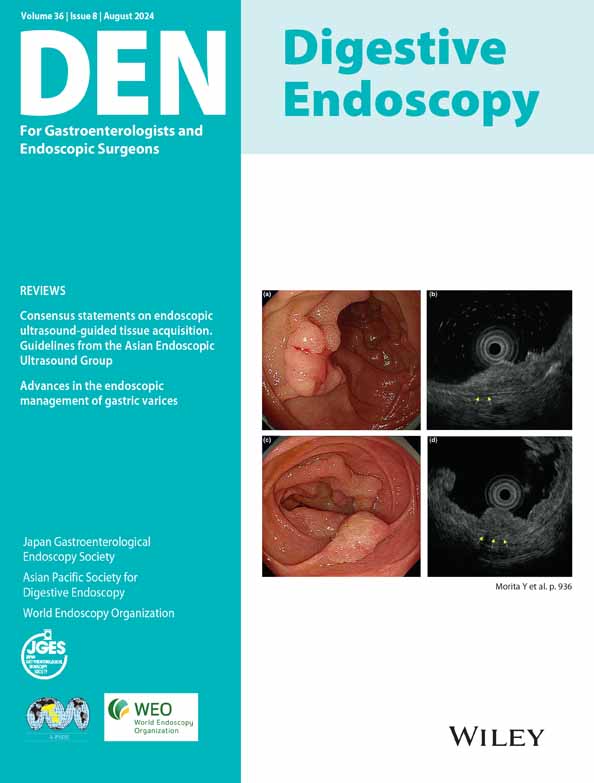Endoscopic muscularis dissection with over-the-scope clip: Novel resection technique for duodenal neuroendocrine tumors
Abstract
Watch a video of this article.
BRIEF EXPLANATION
Duodenal neuroendocrine tumors (dNETs) easily invade the deep submucosa, resulting in a low R0 resection rate (50%) with conventional endoscopic mucosal resection.1 Endoscopic resection has recently seen the utilization of the over-the-scope clip (OTSC). Endoscopic muscularis resection with OTSC (EMRO) facilitated muscularis resection without perforation2 and achieved a high R0 resection rate (92.9%) for dNETs.3 Nevertheless, electricity can flow toward the OTSC in employing a monopolar snare when the area constricted by the OTSC is smaller than that of the closed snare,3-5 leading to coagulation damage to the duodenal mucosa and ultimately resulting in EMRO failure.
Here we present the case of an 80-year-old man with cT1 dNET located on the anterior wall of the bulb (Fig. 1), which was not successfully resected by EMRO but could be resected completely through endoscopic muscularis dissection with OTSC (EMDO) (Video S1). We decided to perform EMRO, deploying the OTSC during the process (Fig. 1). The lesion was ensnared above the OTSC without contact, and Endocut electrocoagulation (VIO300D; Erbe Elektromedizin, Tübingen, Germany) was employed. However, electricity flowed toward the OTSC, resulting in mild coagulation damage to the duodenal mucosa and rendering snare resection impossible. Therefore, we switched to an endoscopic dissection technique, named EMDO. The dissection proceeded above the OTSC, utilizing the ORISE ProKnife (Boston Scientific, Watertown, MA, USA). Endocut mode was primarily employed for mucosal incision and muscularis dissection, resulting in the resection of the lesion without any adverse events. The histopathological findings revealed a dNET confined to the deep submucosa with negative resection margins, confirming successful muscularis resection (Fig. 2).


To our knowledge, this is the first report of EMDO. Muscularis resection was achieved without perforation, similar to the outcomes of EMRO. EMDO could serve as an alternative when EMRO is not feasible due to the flow of electricity toward the OTSC.
Authors declare no conflict of interest for this article.




